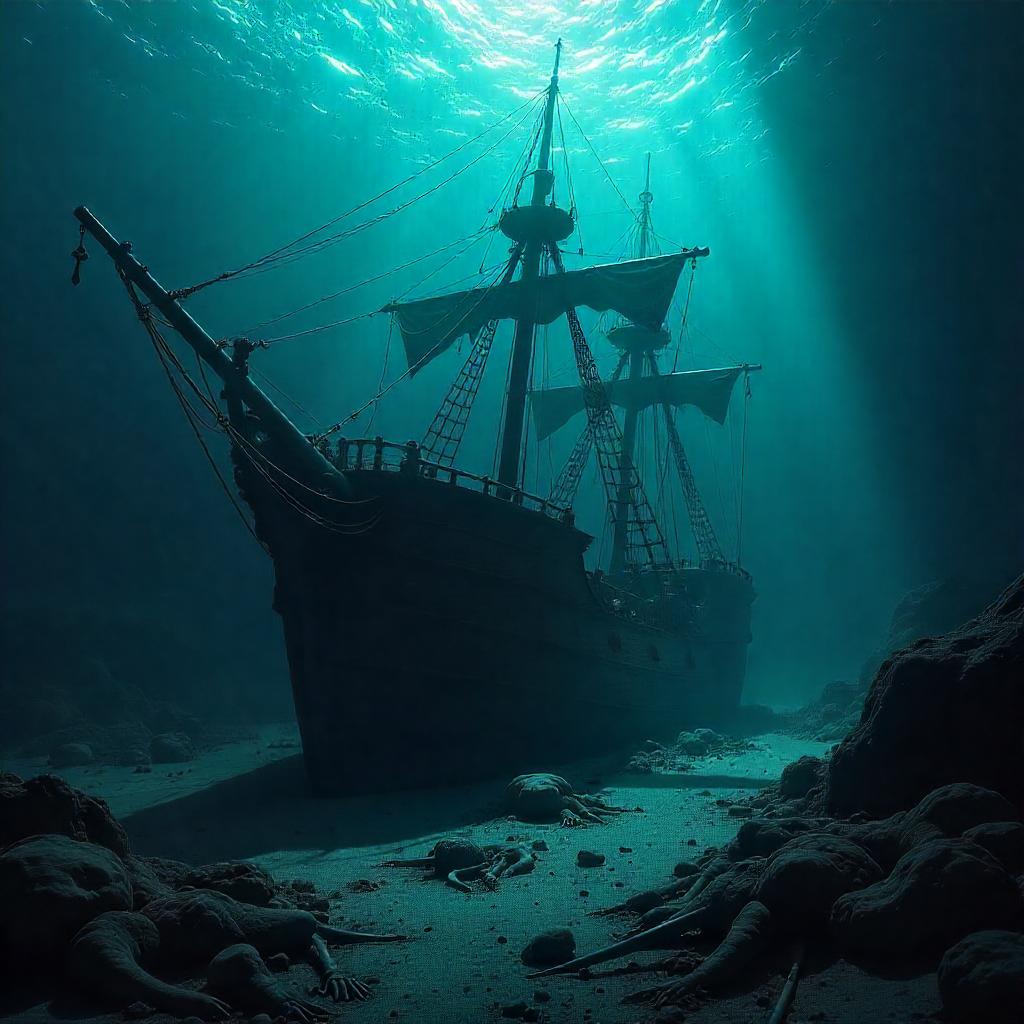When Hans Quartermain’s orchestral music exploded among the waves of the Caribbean Sea, and Captain Jack Sparrow stepped on the wreckage of the mast and landed in Port Royal, a new era of subverting the traditional pirate narrative had already begun. The Pirates of the Caribbean series, with its treacherous narrative strategy, tore a crack of romanticism in the Hollywood industrial assembly line. This is not only a successful template for commercial movies, but also a cultural deconstruction experiment in a postmodern context, recoding the ancient symbol of pirates as a cultural totem in the era of globalization.
The Eternal Dance of Order and Chaos
When the bronze gun barrel of the Royal Navy flagship “Dreadnought” pointed at the Black Pearl, the collision of the two civilizations erupted. Lord Beckett’s straight uniform and Captain Jack’s ragged tunic constitute a visual confrontation between Enlightenment rationality and romanticism. The film deliberately blurs the line between good and evil: the East India Company’s slave trade unveils the barbarism under the mask of civilization, while the “parley” clause in the pirate code demonstrates the primitive spirit of contract. This moral ambiguity reaches its peak in Davy Jones’s Flying Dutchman, where the cursed sailor is both the keeper of the order of the sea and the bearer of eternal torture.
Captain Jack’s staggering drunken stride is, in fact, a survival strategy for the postmodern hero. He navigates between the navy, pirates and supernatural forces, deconstructing all systems of authority with his absurd demeanor. When he draws a star map on the turtle-shell beach at the end of the world, the rationalist mapping tool is reduced to a footnote of pirate intuition. This kind of playfulness towards the traditional power structure is figuratively shown in Captain Barbosa’s constantly changing prosthetic limbs – each wooden joint is inscribed with the dialectical rules of resistance and compromise.
The Alchemy of Mythic Reconstruction
The cursed gold coins revealed by skeletons under the moonlight fuse Caribbean legends and Celtic myths into a new narrative alloy. Tia Dalma’s voodoo spells mixed with African Yoruba beliefs, Davy Jones’s Norwegian sea monsters originated from the Norse mythology of the Kraken, and the Fountain of Youth adventure is implicitly linked to the Spanish colonizers’ obsession with immortality. This cultural mash-up culminates in the showdown at Shipwreck Cove: Aztec gold coins from the Mayan civilization, silks from the Qing Empire, and Arabian scimitars are interwoven under fire to create a picture of civilization on the eve of globalization.
The surreal scenes created by digital special effects are essentially a witchcraft orgy in the age of technology. The moment the Black Pearl is transformed into a skeleton battleship in the moonlight, CGI technology completes the digital reincarnation of Baroque aesthetics. When octopus-faced Davy Jones “grows” 16 million independently controlled tentacles in a quantum computer, Industrial Light and Magic’s workstation becomes a modern-day alchemist’s furnace. The classic scene of Captain Jack fighting with the skeleton sailors in the drum is the physical comedy of the silent movie era infused with the mechanical aesthetics of steampunk.
The self-multiplication of cultural symbols
When Disneyland’s “Pirates of the Caribbean” ride was first operated in 1967, it would never have been imagined that this IP would explode with such amazing cultural energy in the new century. From the mechanical figures of the theme parks to the digital oceans of the silver screen, the series completes the perfect loop of cross-media narrative. Captain Jack’s smoky makeup and orchid finger, as interpreted by Johnny Depp, has become a universal emoji of pop culture, with a cultural penetration that far exceeds that of the golden age of Warner Bros.’ pirate films.
The recurring compass metaphors in the movie are like the cultural references of the IP itself – always pointing to the audience’s deepest desires. When the nine pirate kings gather in Shipwreck Cove, and the chiefs of different colors and languages drink rum together, Hollywood is writing a new allegory of globalization. The giant wave when the goddess Calypso is liberated from the seal is both a reckoning with colonial history and an offering of cultural pluralism.
At the end of The World’s End, the Black Pearl sets sail again and disappears into a sunset burning at sea level. This movie saga, which lasted for twenty years, has long transcended the realm of entertainment product and become a key to decoding postmodern culture. When the new generation of viewers relive the adventures of Captain Jack on the streaming platform, they are exposed not only to the narrative techniques of commercial cinema, but also to an eternal discussion about freedom, identity and the boundaries of civilization. The skeleton on the pirate flag still flutters in the digital age, reminding us that in the eternal game of order and chaos, it will always take a few rebels stepping on drunken steps to stir up the stagnant water of civilization.
